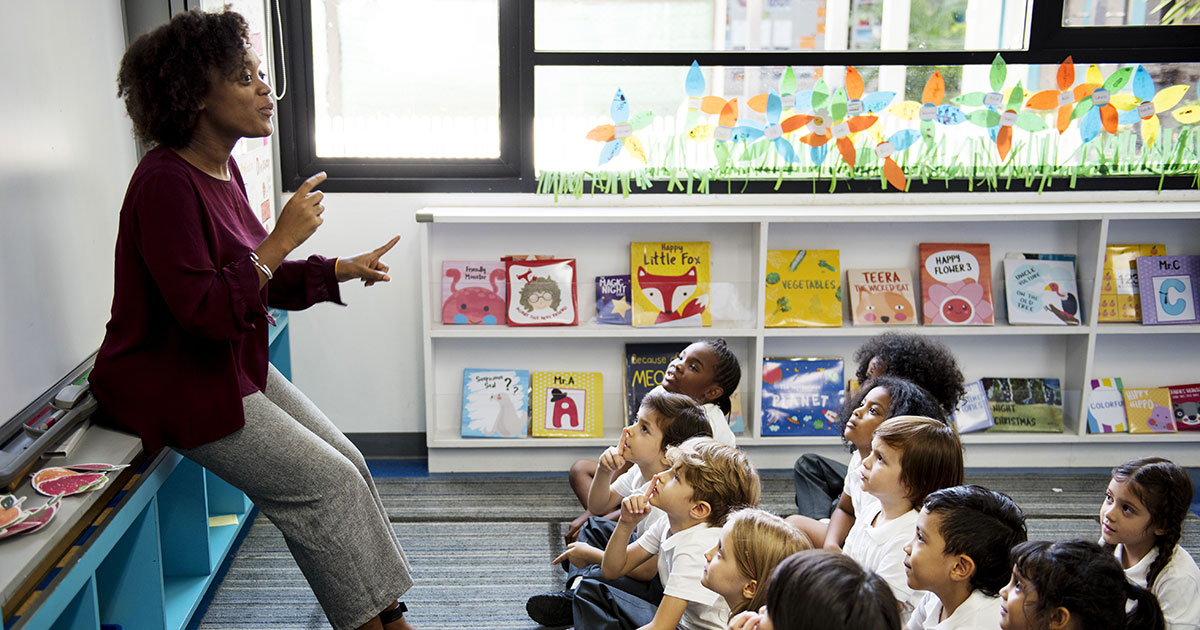
Teachers get to have so many positive moments. They inspire, educate, engage, mentor, and lead. It’s these moments that make the less-than-glamorous aspects of teaching all worthwhile. But sometimes, situations will arise where it will be difficult to paste on a smile and forge ahead.
Negative behaviors are simply a fact of life for teachers. Even when lessons are engaging, educational, collaborative — barely short of magical, really — educators still face behavior problems. Dealing with these actions directly and appropriately provides the best possible outcome and sets the stage for positive changes in student behavior. To increase the chances of success, think about framing consequences instead of punishments.
Consequences vs. punishments
The terms consequences and punishments frequently get mashed into the same category because they both occur as a result of negative behavior. However, the two are not one and the same. Punishments are penalties or disciplinary measures taken as the result of an action that is intended to deter repeat offenses. Consequences, on the other hand, are the subsequent results of an action. Unlike punishments, consequences can be negative or positive.
Punishments have been proven to be ineffective for most students. One article from Verywell Mind discusses the lack of success when using punishment to reduce negative behaviors.
“Perhaps the greatest drawback is the fact that punishment does not actually offer any information about more appropriate or desired behaviors. While subjects might be learning to not perform certain actions, they are not really learning anything about what they should be doing.”
While you certainly want to deter negative behavior, the better goal would be to teach students a healthier approach to their struggles. In this respect, teaching consequences is more effective.
Natural consequences vs. logical consequences
Ultimately, consequences help us determine our actions. As humans, we weigh the choices in front of us and then determine if we like or dislike the outcome. But this is the adult approach to consequences. Students have yet to truly understand the full extent of how their actions impact themselves and others.
There are two types of consequences: natural and logical.
Natural consequences are the resulting outcomes of a particular behavior. For example, if a child refuses to wear his coat outside, he will be cold.
Logical consequences are those that teach the possible outcomes of a behavior. These are the consequences that are imposed by teachers, parents, and other authority figures. For example, if a child refuses to wear his coat, he isn’t allowed to go outside and play with the other kids at the park.
In the classroom, teachers can use logical consequences to help students learn the personal and collective impact of their behaviors.
Using logical consequences to help enable positive behavior in the classroom
Establishing and following through with clear consequences is the key to encouraging positive classroom behavior. While this isn’t the easiest or most enjoyable part of teaching, it’s necessary. So, roll up your sleeves and dive in.
Consequences can help students understand why certain behaviors are undesirable. This can be somewhat more complicated for students with learning disabilities or those who reside on the autism spectrum.
Autistic students, in particular, are sensitive to unexpected changes. Teach for America recommends that teachers be predictable when interacting with autistic students. “Having predictability in the classroom eases anxiety for students with autism and will help avoid distraction.” Using consistent consequences provides the setting for that predictability and allows you to effectively enforce behavior standards.
Behavior management plans offer a systematic way to approach negative actions. Effective behavior management plans set clear expectations, reward positive behavior with incentives, and outline clear consequences for not complying with set standards. Plans should be visual and easy for students to understand while accounting for individual needs and challenges.
The role of teacher and choice when framing consequences
The true problem with using consequences to encourage positive behavior is the misunderstanding that consequences are punitive actions. As the teacher, you play the role of supporter. As such, it’s essential that you help students understand that consequences are the result of their actions and choices, not yours. That frames you as the supporter, rather than the overseer.
Position yourself appropriately by allowing students to make choices and then follow up to help them understand that the consequences are a direct result of that selection. Make it unrelated to your position as an authority figure.
Ultimately, being a caring and supportive educator will nurture students to develop their emotional intelligence and give them the tools they need to face future challenges.
Ashley gained a passion for all things writing by spending years teaching a high school English class. She founded Contenthusiast so that she could spend her days hovering over a keyboard. When she isn’t writing, you can find her traveling with family or buried in a book.
